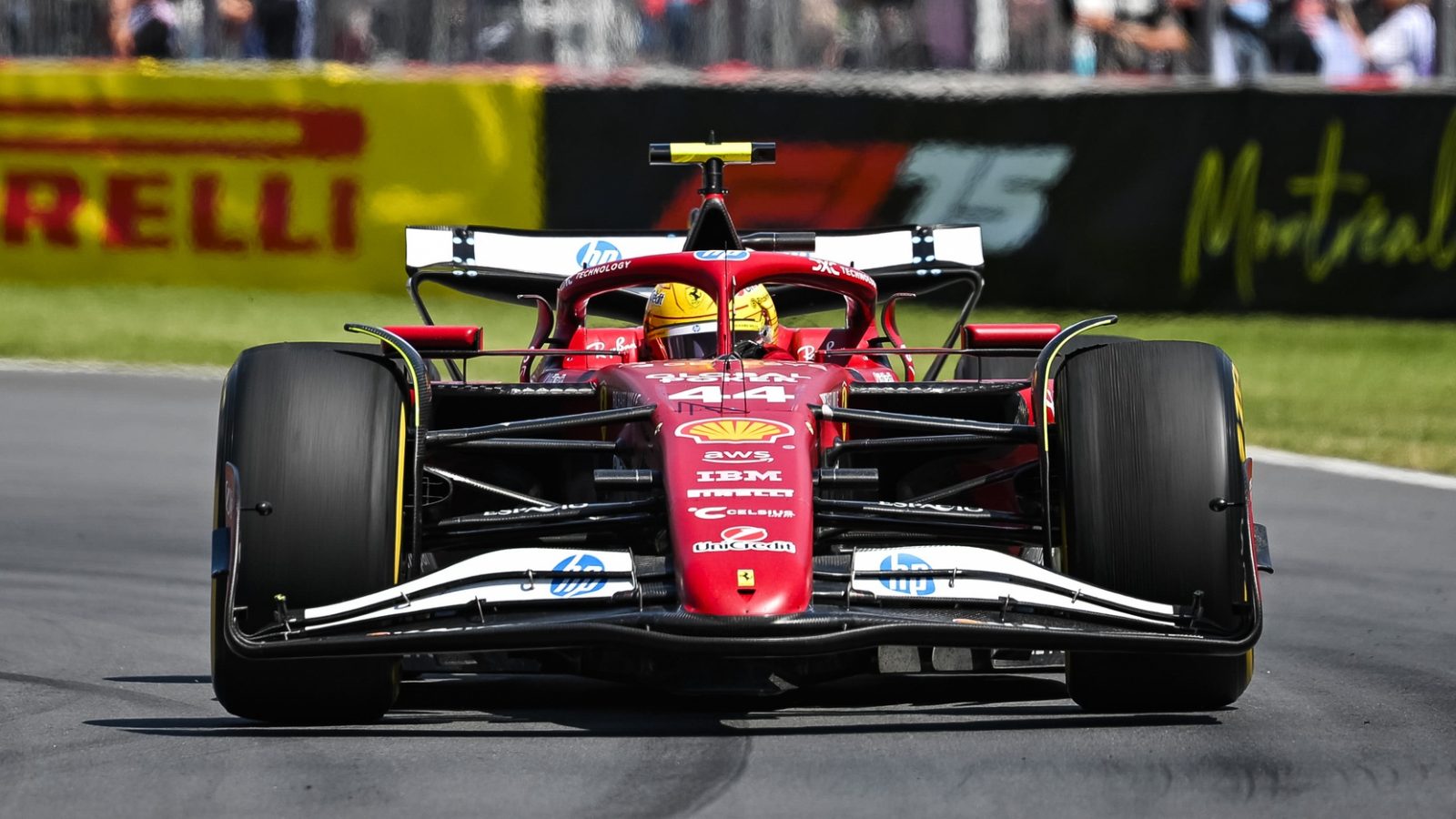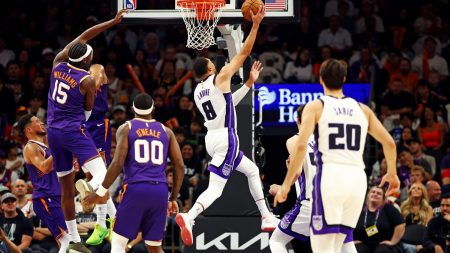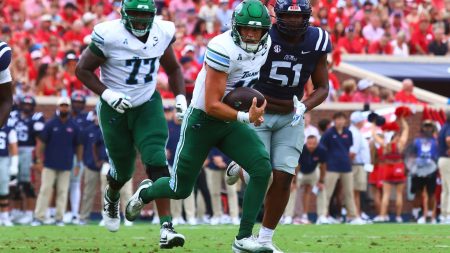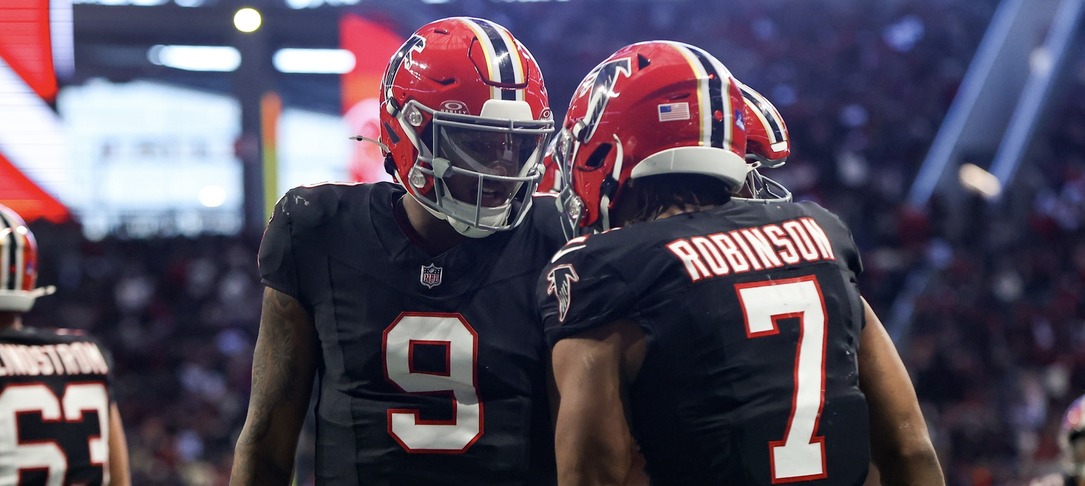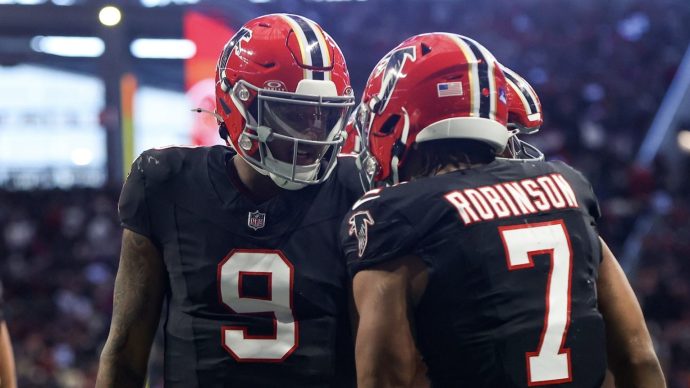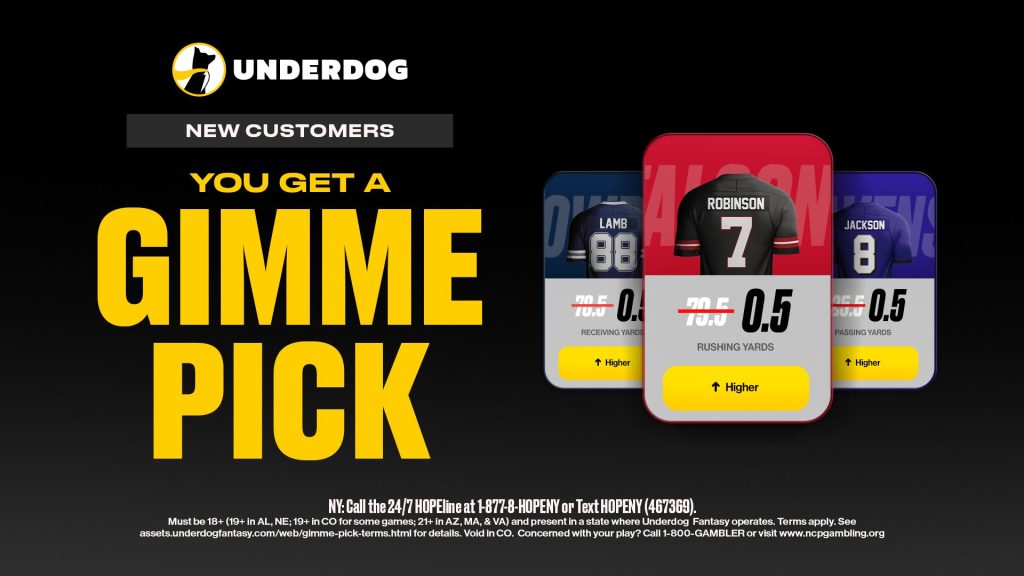Formula 1 is the world’s premier open-wheel racing series, with global appeal and a growing betting market. With races staged across five continents and a season that spans from March to December, F1 offers consistent betting opportunities throughout the year.
Each Grand Prix weekend features high-stakes qualifying sessions, evolving track conditions, and complex team strategies, making it one of the most dynamic motorsports to bet on. From outright winners to technical prop bets, understanding how to approach the unique variables of F1 can give you a significant edge.
Each weekend, we’ll break down our top picks so you can maximize the value on the best F1 props and bets.
Best Apps in All States


Best F1 Props Today – Formula 1 Picks & Analysis
Looking for the sharpest British Grand Prix prop bets? Our Props team has circled their favorite F1 picks for Sunday’s showdown.
Let’s dive into the top value plays ahead of lights out at Silverstone Circuit.
Lewis Hamilton Top 4 Finish
Winning the British Grand Prix at Silverstone demands aerodynamic efficiency, high-speed stability, and unwavering driver confidence, as the historic circuit is one of the fastest and most technically demanding on the Formula 1 calendar.
The 5.891 km layout features legendary corners like Maggotts, Becketts, and Copse, which require exceptional downforce and precise car control at full throttle. With several overtaking opportunities—particularly into Brooklands, Stowe, and Vale—racecraft and DRS usage are crucial, especially in close battles.
Silverstone’s wide layout and mix of fast-flowing curves and slower technical sections test both car balance and driver endurance. Changing weather conditions often add another layer of unpredictability, making tire strategy and timing of pit stops critical.
To win here, a driver must master high-speed cornering, maintain consistent race pace, and execute flawless team strategy on a track where momentum and rhythm are everything.
Lewis Hamilton emerged victorious at the 2024 British Grand Prix on July 7, delivering a stunning performance that thrilled his home crowd. Starting from second on the grid after then teammate George Russell secured pole, Hamilton navigated a tricky mix of wet‑dry conditions with remarkable skill.
Hamilton overtook Russell during a key moment, pulled ahead of Max Verstappen, and held position through two pit stops to claim his then 104th career win and a record‑breaking ninth victory at Silverstone.
Lando Norris emerged victorious at the 2025 Austrian Grand Prix on Sunday, converting pole position into a commanding win and fending off teammate Oscar Piastri to complete a McLaren one–two. Charles Leclerc claimed third, followed by Hamilton in fourth, while George Russell’s Mercedes finished in a distant fifth.
Piastri leads the Driver’s Standings with 216 points, with Norris on 201 and Verstappen at 155.
Piastri and Norris are favored to win this year’s British Grand Prix at +155, followed by Verstappen at +380. Russell and Leclerc are at +1400 and Hamilton is at +1800.
Hamilton’s expertise under high-downforce conditions, exceptional car control, and razor-sharp wheel-to-wheel awareness make him a strong contender for a top-four finish at this year’s British Grand Prix.
Silverstone’s fast-flowing layout, with iconic complex sequences like Maggotts–Becketts–Chapel and high-speed corners such as Copse, demands stability at full throttle and precision in aerodynamic balance, which are well-suited to Hamilton’s aggressive yet controlled driving style.
Hamilton’s knack for managing tire degradation and adapting to changing track conditions—especially in mixed or wet weather—adds another layer of strength in a race that often features unpredictable British climate.
With Ferrari showing promising pace and Hamilton eager to defend his home soil, his consistency, experience in high-pressure scenarios, and ability to extract performance in close-pack battles give him every rationale to achieve a strong top-five result at Silverstone this year.
Pick: Lewis Hamilton Top 4 Finish
Understanding Formula 1 Betting Odds and Market Types
Most sportsbooks present Formula 1 odds in American, fractional, or decimal formats. While markets aren’t as extensive as football or basketball, the depth and complexity of F1 races create plenty of angles to exploit.
Race Winner
This is the most basic but toughest bet to cash in F1. You’re picking who crosses the line first — but dominant teams like Red Bull or Mercedes often cause heavy odds inflation.
These lines factor in qualifying pace, car strength on the specific track, team upgrades, and historical success.
Podium Finish (Top 3), Top 6, Top 10
Don’t want to bet on a winner? You can wager on whether a driver finishes inside a specific placement range. This is ideal when backing drivers from second-tier teams like Aston Martin or McLaren.
Head-to-Head Matchups
Books offer matchup bets between two drivers — whoever finishes higher wins.
These lines reflect driver consistency, grid start, tire allocation, and team reliability.
Prop Markets and Specialty Bets
F1 offers unique prop markets tailored to its structure. These include:
- Fastest Lap: Bet on which driver sets the fastest lap (often attempted late on soft tires).
- Safety Car Appearance: Will a safety car appear during the race?
- Number of Finishers: Over/Under markets on classified finishers.
- Winning Margin: Bet on how many seconds the winner finishes ahead.
- First Driver to Retire: Predict who drops out of the race first due to crash or mechanical failure.
Futures
Long-term bets include:
- Drivers’ Champion: Pick the season’s world champion (e.g., Verstappen, Leclerc).
- Constructors’ Champion: Wager on which team wins the overall team title (e.g., Red Bull, Ferrari).
Odds shift week to week based on race results and team development pace.
Formula 1 Props Tips and Strategy
Becoming a successful F1 bettor means understanding that every track, every car, and every weather pattern changes the equation. Here are core strategies to keep you ahead of the curve.
Track-Specific Specialists
Different drivers and teams excel on certain circuit types:
- Monaco (Street circuit): Pole position is critical due to near-zero overtaking. Bet qualifying-heavy teams like Ferrari.
- Spa-Francorchamps (High-speed layout): Red Bull often dominates due to superior straight-line speed.
- Hungaroring (Twisty, downforce-heavy): Teams like Aston Martin or McLaren may shine here due to aero setups.
Match team strengths to track traits before betting.
Qualifying Results Are King
F1 qualifying often predicts race outcomes. For instance, at Monaco, over 80% of winners since 2004 started on pole. Before betting race winners, wait for qualifying and grid penalties — starting position matters.
If Lewis Hamilton qualifies P6 at Baku, for example, and the track offers few overtaking zones, his win odds should be faded despite car strength.
Team Dynamics and Pit Strategy
Drivers don’t race alone. Team orders, pit strategy, and tire allocation affect outcomes:
- Number two drivers (e.g., Stroll or Tsunoda) are often instructed to let teammates through.
- A poor pit stop (e.g., 5.2 seconds vs. the usual 2.5) can cost multiple positions.
- Track position plays a huge role when undercuts are viable — bettors must anticipate tire stints.
Weather: Game-Changer
Rain races flip the board. Watch the forecast:
- 2016 Brazilian Grand Prix: Verstappen surged from P16 to P3 in the rain.
- Wet-weather aces like Hamilton and Alonso gain value when rain hits.
- Rookies or error-prone drivers can be fade targets in unpredictable conditions.
Books often delay odds updates on sudden weather shifts — creating value windows.
Momentum, Upgrades, and Team Form
F1 teams constantly update cars. A new floorboard, rear wing, or suspension tweak can improve lap time by tenths.
- Watch for mid-season upgrades (announced in practice).
- Analyze team momentum: Are they gaining performance (e.g., McLaren 2023 summer stretch) or losing ground (e.g., Mercedes early 2022)?
Momentum matters across a season. Don’t just bet last week’s result — look at trending pace.
Avoid Early-Week Betting Without Data
Unlike stick-and-ball sports, F1 changes dramatically over a race weekend. Betting on Tuesday for a Sunday race — without seeing practice or qualifying — is mostly guesswork.
Use FP2 and FP3 lap averages, long-run pace, and trackside conditions before committing to race bets.
Types of F1 Prop Bets
Prop markets in F1 can vary widely by sportsbook, but some of the most common include:
- Fastest Lap: Which driver will record the fastest lap during the race.
- Top 6/10 Finish: Will a driver finish inside the top 6 or top 10.
- Qualifying Head-to-Head: Which of two drivers will qualify higher.
- Race Head-to-Head: Who will finish higher between two specific drivers.
- Safety Car Props: Will there be a safety car during the race?
- First Driver to Retire: Which driver will be the first to DNF.
- Team Props: Will both drivers from a constructor finish in the points?
These bets often fly under the radar and offer softer pricing compared to outright markets, particularly when tied to evolving weekend conditions.
Key Stats and Data Points for Prop Betting
To consistently beat F1 prop markets, you’ll need more than casual fandom. Successful bettors anchor their strategy in hard data:
Qualifying Pace vs. Race Pace
Some cars (like Williams or Alpine in recent years) overperform in qualifying but fall back during race day due to tire degradation or poor race setups. If you’re betting on head-to-heads or top-10 finishes, this distinction is critical.
Tire Wear and Strategy Trends
Teams like Mercedes or Aston Martin may perform well on high-deg tracks. On circuits where tire wear plays a pivotal role (e.g., Barcelona, Silverstone), pay attention to stints from prior seasons and Friday long-run data.
Track-Specific Performance
Red Bull’s dominance isn’t universal. Teams often excel or struggle based on the circuit layout. For instance, Ferrari may thrive on low-downforce tracks (like Monza), while McLaren may be better on high-speed corners.
Weather Forecast
Wet-weather races are prop betting goldmines. Mixed conditions often create chaos, which can turn long-shot props like “first driver to retire” or “top 6 finish” into sharp plays.
Driver Consistency and Team Orders
Understanding intra-team dynamics helps with head-to-head bets. If a team favors a clear No. 1 driver (e.g., Verstappen at Red Bull), props around teammate matchups become predictable — especially in qualifying and pit strategy.
Strategy Tips to Gain an Edge
Finding success in Formula 1 prop betting isn’t just about knowing the drivers or following the championship standings — it’s about understanding how the small edges within a race weekend can translate to profit in overlooked markets. Props reward bettors who can anticipate race developments, read between the lines of team strategies, and capitalize on market inefficiencies before they disappear.
With that in mind, here are several sharp strategies to improve your F1 props game:
Fade the Public Narrative
Props are often priced based on recent race headlines or championship standings. Dig deeper. A driver who just won may not be suited to the next track — creating overvalued lines.
Target Friday and Saturday Insights
FP2 and FP3 sessions give strong clues about race pace and tire plans. Market movement after qualifying tends to lag; you can often find pre-qualifying value in props if you’re tracking practice sectors closely.
Look for Value in Team-Specific Props
Some teams are more reliable at double-point finishes or consistent pit stop execution. Props involving both drivers in the points or fastest pit stop are rarely optimized.
Live Betting Props
During a race, you can exploit live props if you understand undercut potential, tire phase timing, or if a driver is nursing damage. Books can be slow to adjust to live timing nuances.
Final Thoughts
Formula 1 prop betting rewards deep research and circuit-specific understanding. Rather than chasing longshot outrights or public-favorite podiums, props offer niche opportunities where sharp bettors can exploit inefficiencies in driver trends, car setup quirks, and team strategy.
By focusing on key indicators — qualifying vs. race performance, tire profiles, weather, and team orders — you can consistently uncover value across F1 race weekends. If you’re betting on Formula 1 and not looking at props, you’re leaving edge on the table.
